Romanesque
1/16
There's no tags or description
Looks like no tags are added yet.
Name | Mastery | Learn | Test | Matching | Spaced |
|---|
No study sessions yet.
17 Terms
Romanesque Art
1000-1200
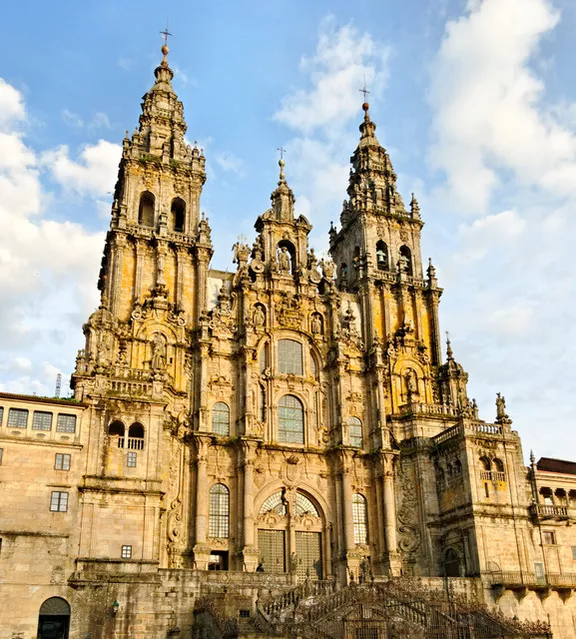
Cathedral of St. James at Santiago de Compostela, Spain, 1078-1122, Romanesque
-Big pigrimage site: was made to accomodate large amounts of people.
-Barrel Vaults: Exert lateral pressure → the walls had to be thick and they couldn’t have a lot of windows
Romanesque churches were often dark and dim.
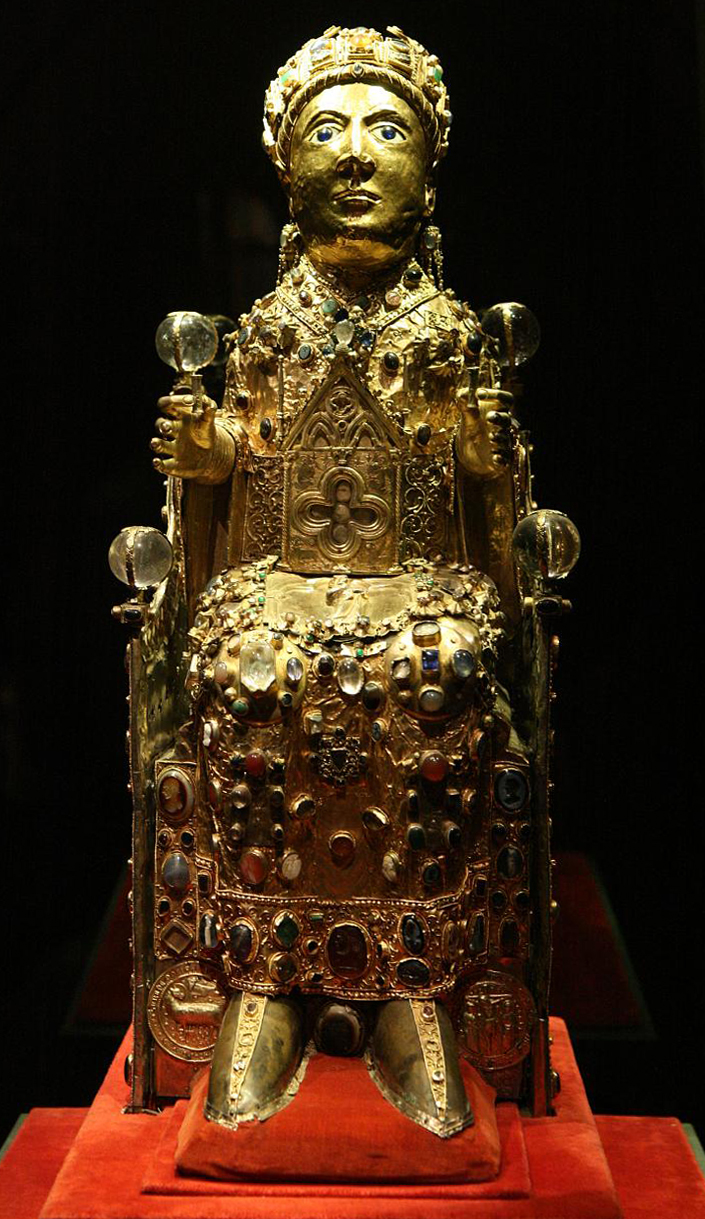
Reliquary of Ste. Foy, Abbey Church, Conques, France, Romanesque
-Head may have been reused from an old statue
-Crown and jewels were added during romanesque period.
-Pilgrimage stop on the way to Cathedral of St. James → Brought in a lot of money.
-No iconolclasm because Western Europe was less structured (more small towns, less kingdoms) then eastern (byzantine), no one entity for that kind of policy.
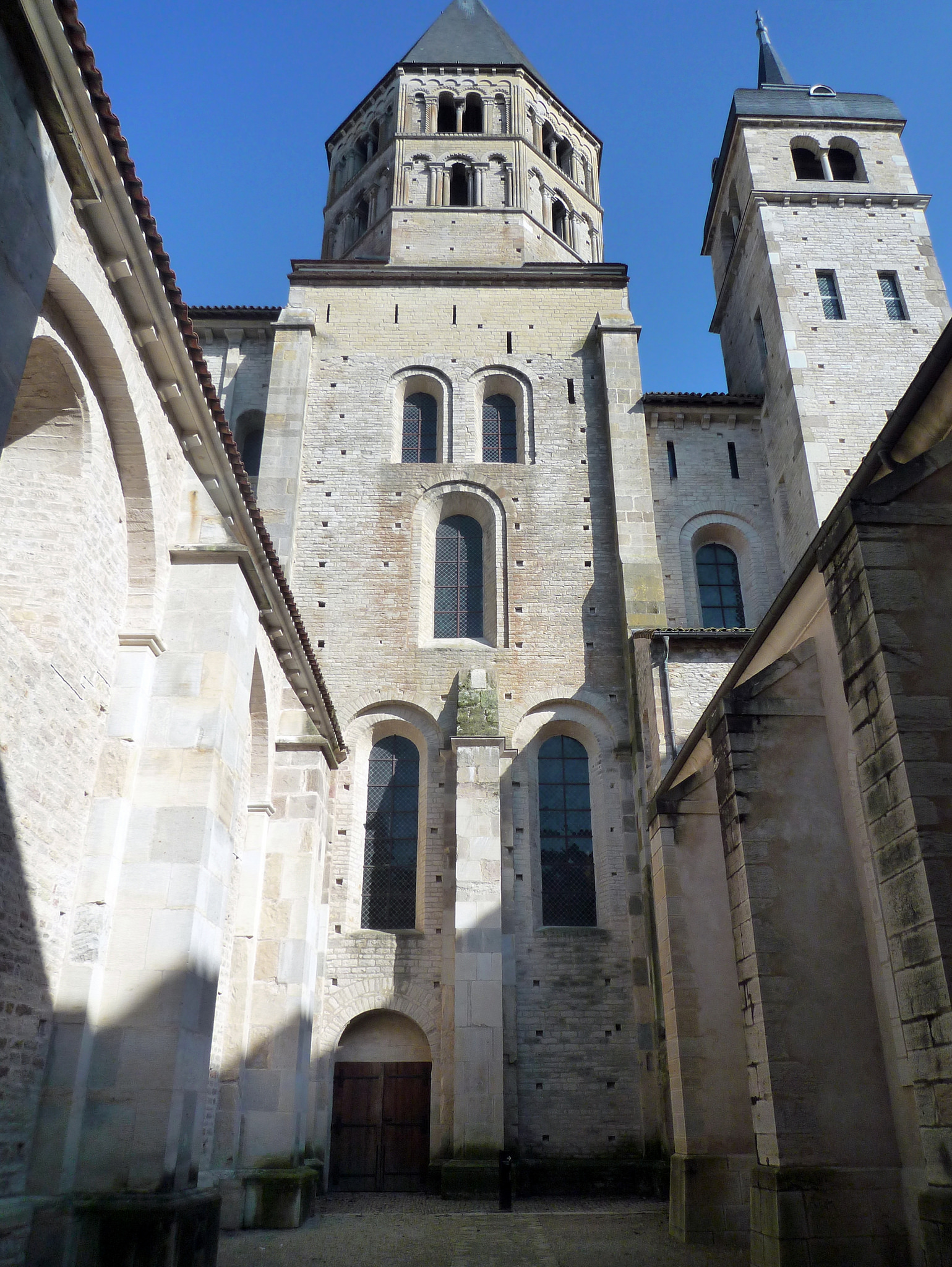
Abbey of Church Cluny III, Burgundy France, 12th Century, Romanesque
-Abbey Church, but also residence for monks and nuns → Hundereds of monks
-A donor, william of aquitaine gave the monks money and independence → Got to keep their profits and got really rich
-Cluny III was built with donations
-Church was dismanteld during the french revolution as it stood for everything the revolution hated → Wealth and power of the church.
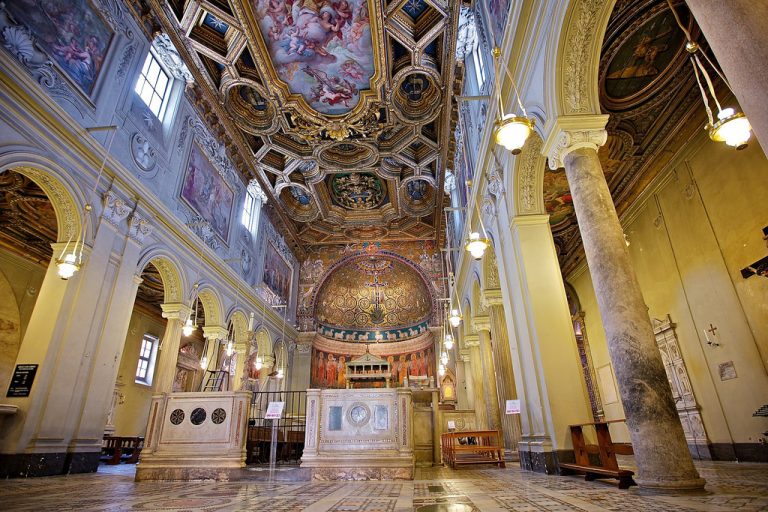
San Clemente, Rome, 1128, Romanesque
-Was the site of pilgrimmage because it was the home of the pope.
-Built on the site of an early christian church
-Apse Mosaic: back to early roman roots, similar to the Dome of the Rock and Ara Pacis, old vine swirling.
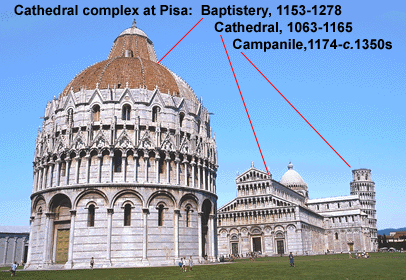
Pisa Cathedral, Pisa Italy, 1063, Romanesque
-Pisa used to be a big maratime power, big navy that defeated other big powerful navys
-Roman Influence: columsn, blind arcade
-Leaning tower: marshy ground led to it leanding before they finished constructing it.
-Spolia: using materials from other buildings to build a new one, adds to the antiquity and presteige of the church.
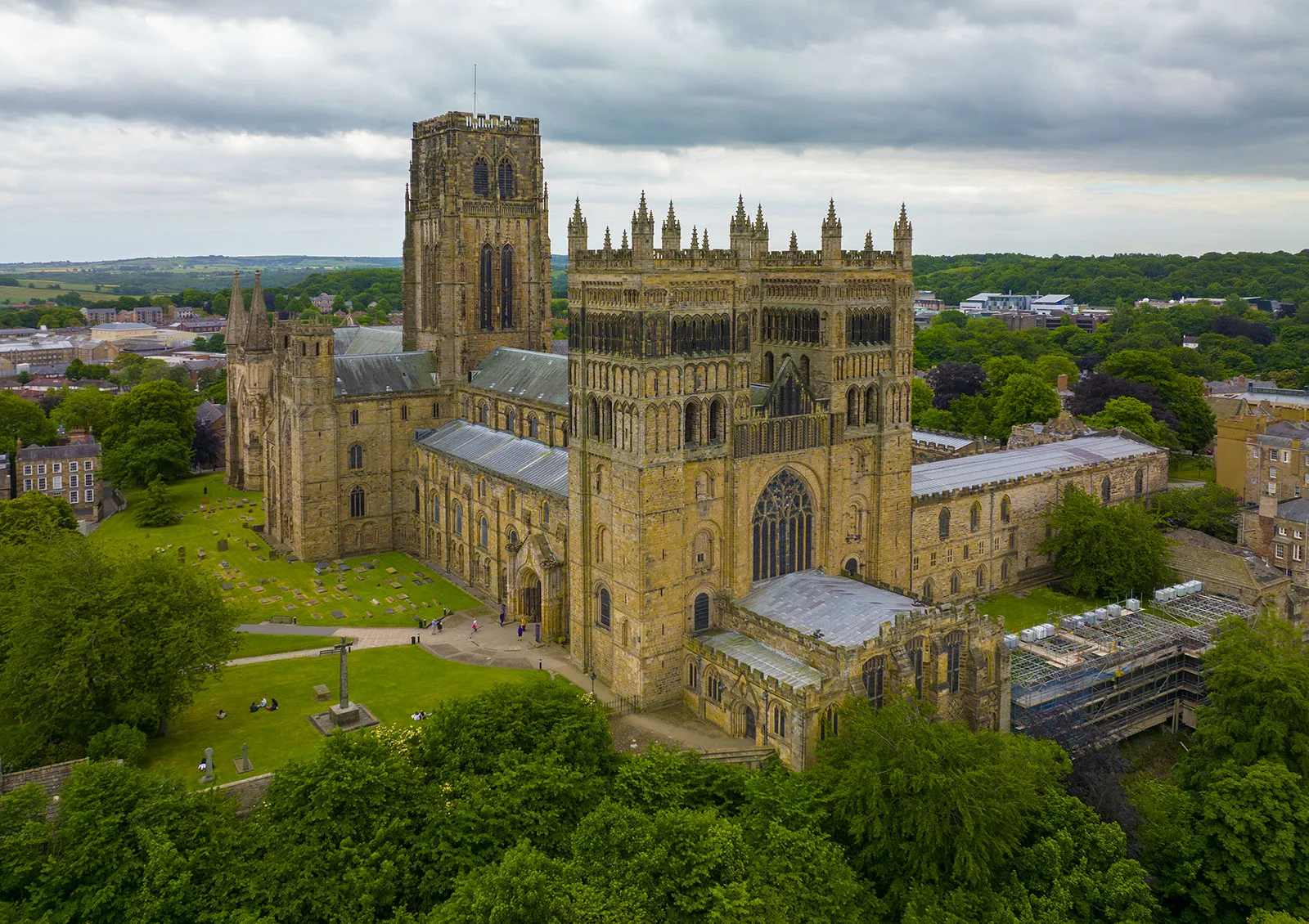
Durham Cathedral, England, 1087-1133, Romanesque
-Built during the time of the crusades, architects saw islamic art and architecture, which influenced their vision for the church
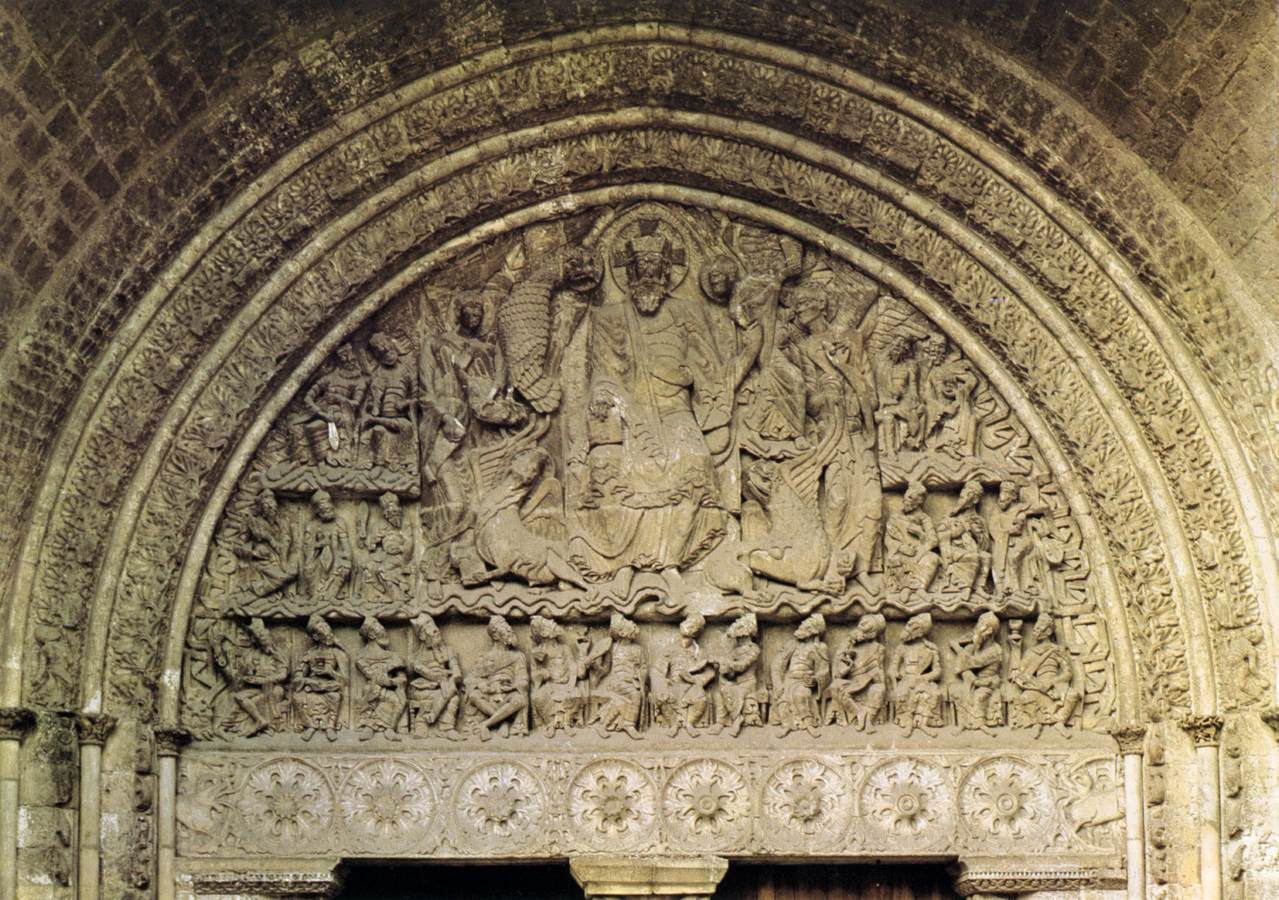
Southside Portal, St. Pierre at Moissac, c. 1115, Romanesque
-Christ in Majesty: 24 men/elders dressed and cround, chirst seated on his throne
-Mandorla Shape: Christ in Almond shaped frame
Hierarchy of scale
Sea of Glass: literal Sea
4 Animals that represent the 4 evangelists
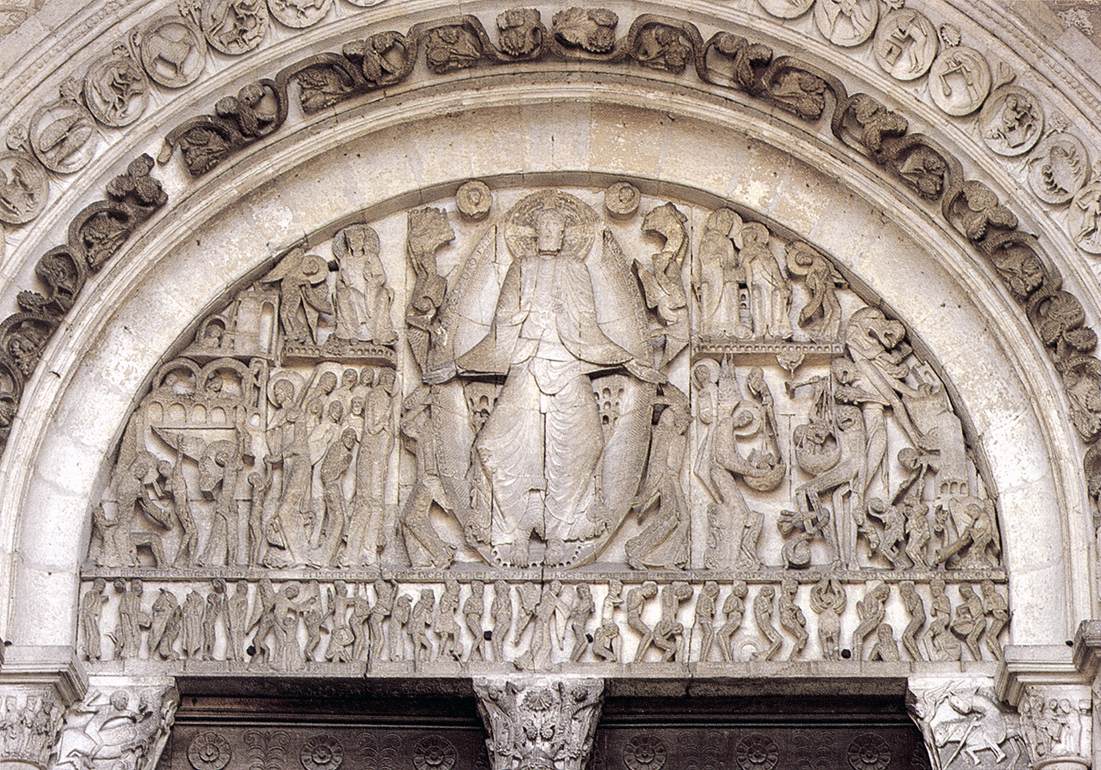
West Portal, cathedral of St. Lazare, 1120-30, Romanesque
-Depicts the last judegement
-Mandorla: Christ big at the center
-The good on the left, the damned on the right.
-Pilgrims couldn’t read, so imagery was very powerful. → Made it super close to biblica text
-Intense intimidating imagery meant to sacre people into being good.
The West Portal of the Cathedral of St. Lazare, created between 1120 and 1130, features the Last Judgment with Christ prominently in a mandorla at the center. Imagery contrasts the saved on the left and the damned on the right, serving as a visual guide for illiterate pilgrims.
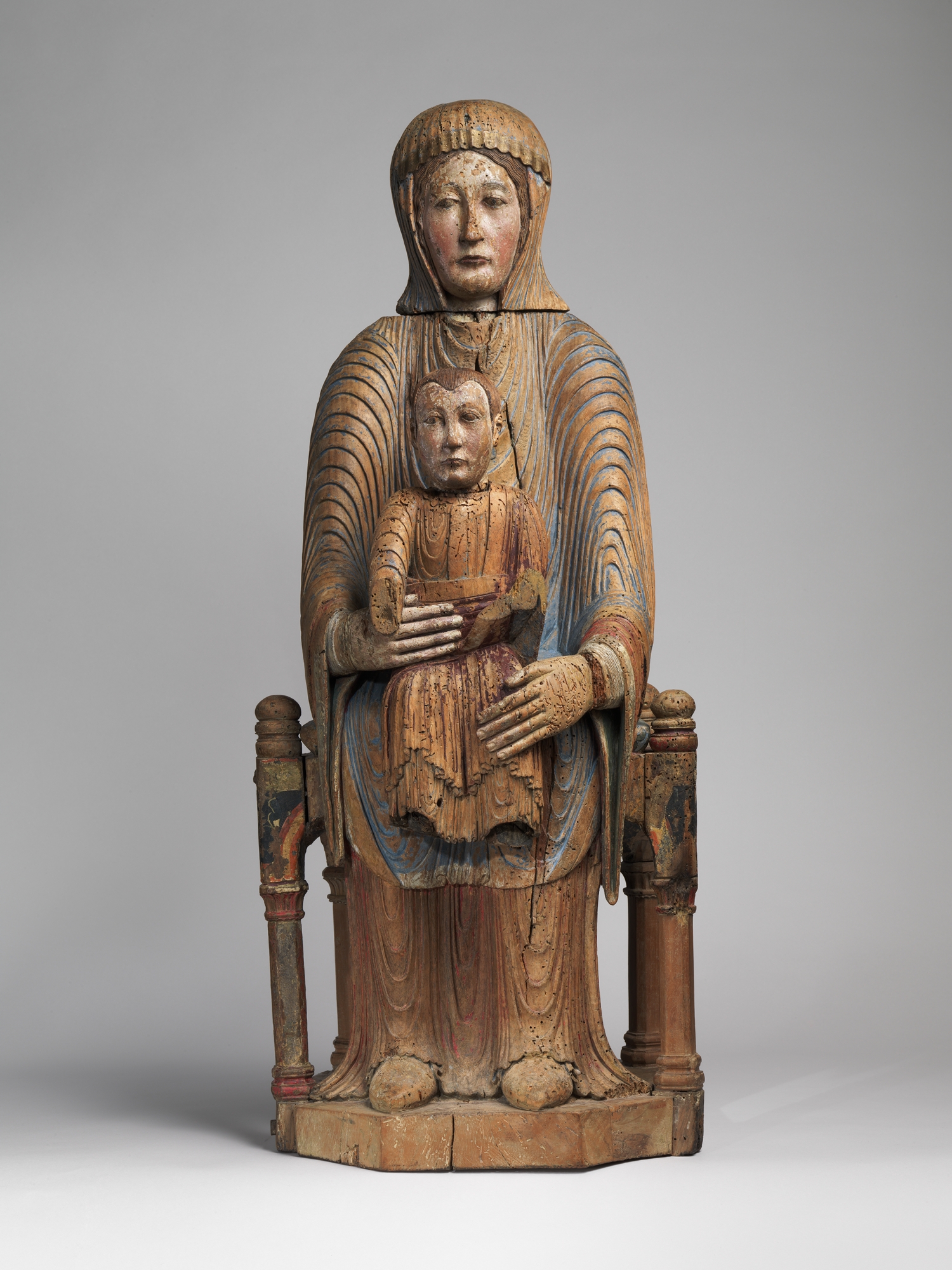
Virgin Mary and Child in Majesty, c.1175-1200, Romanesque
-Portable Reliquary: Paraded down the streets during important occasions.
-Mary portrayed as the throne for Jesus Christ.
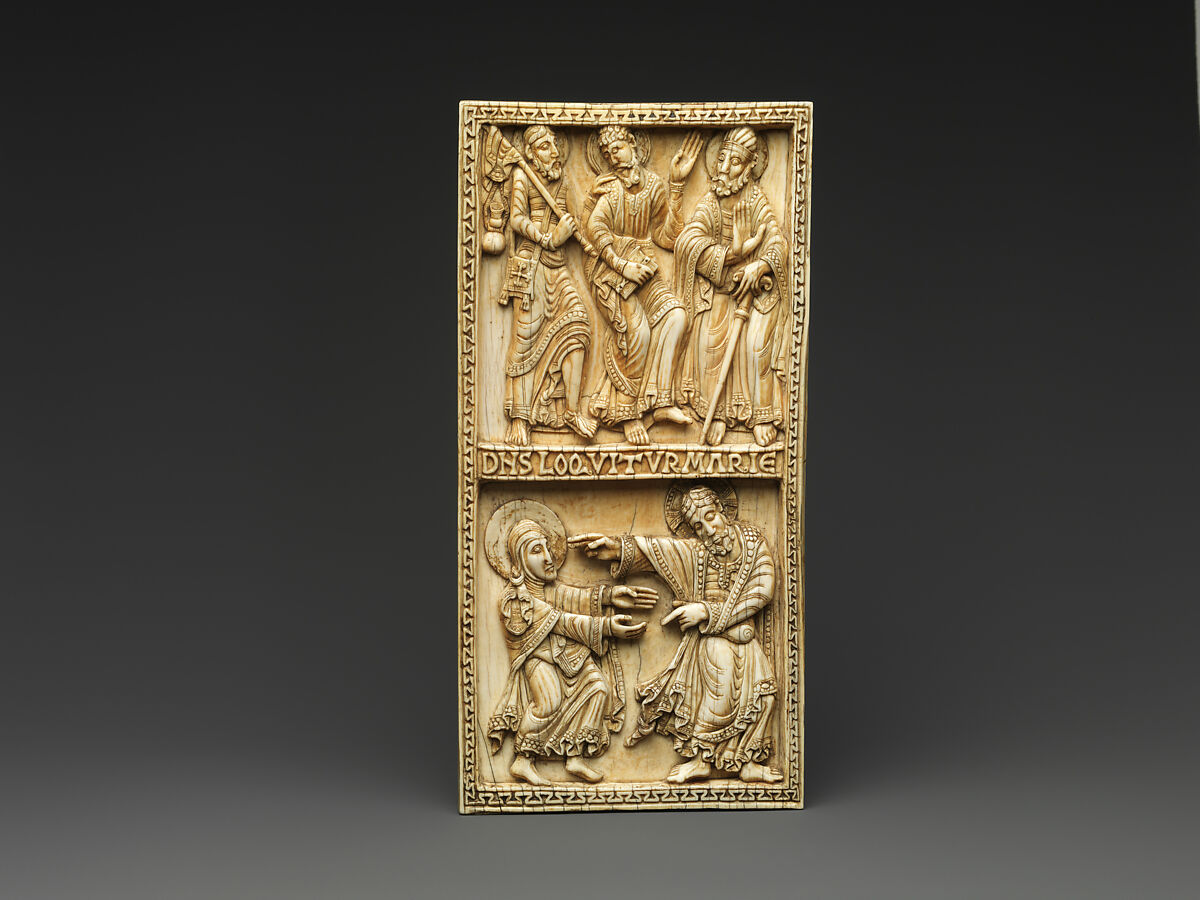
Ivory Plaque with Journey to Emmaus and Noli me tangere, c. 1115-20, Romanesque
-Emmaus: 2 Travelers who ran into Jesus and didn’t recognize him at first → Top
-Noli me Tengere: Gardner runs into Christ → Bottom
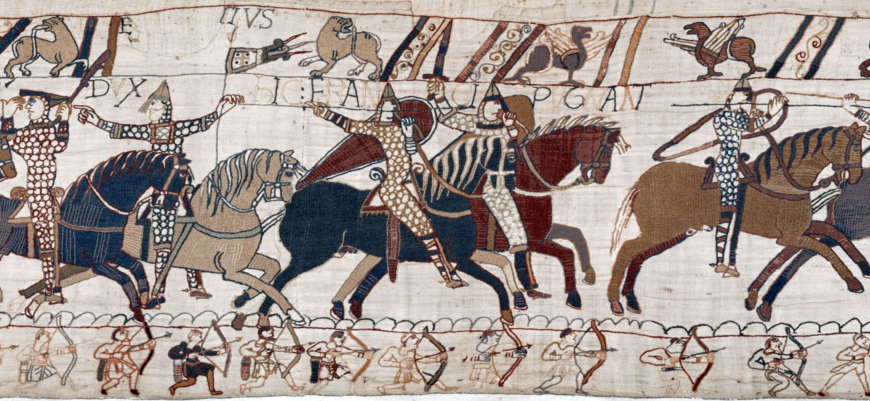
Bayeux Tapestry (Actually Embroidery) 1066-82, Romanesque
-Only art of its kind to survive from this period
-Shows many battle scenes like the one of William the Conquere Duke of Normandy invading England → English still influenced by French today bc of invasion
-Norman Bias: Norman characters featured more than Anglo-Saxton because Norman people were dictating/designing the tapestry while Anglo-Saxtons embroidered it.
-Tapestry used to help tell stories through song.
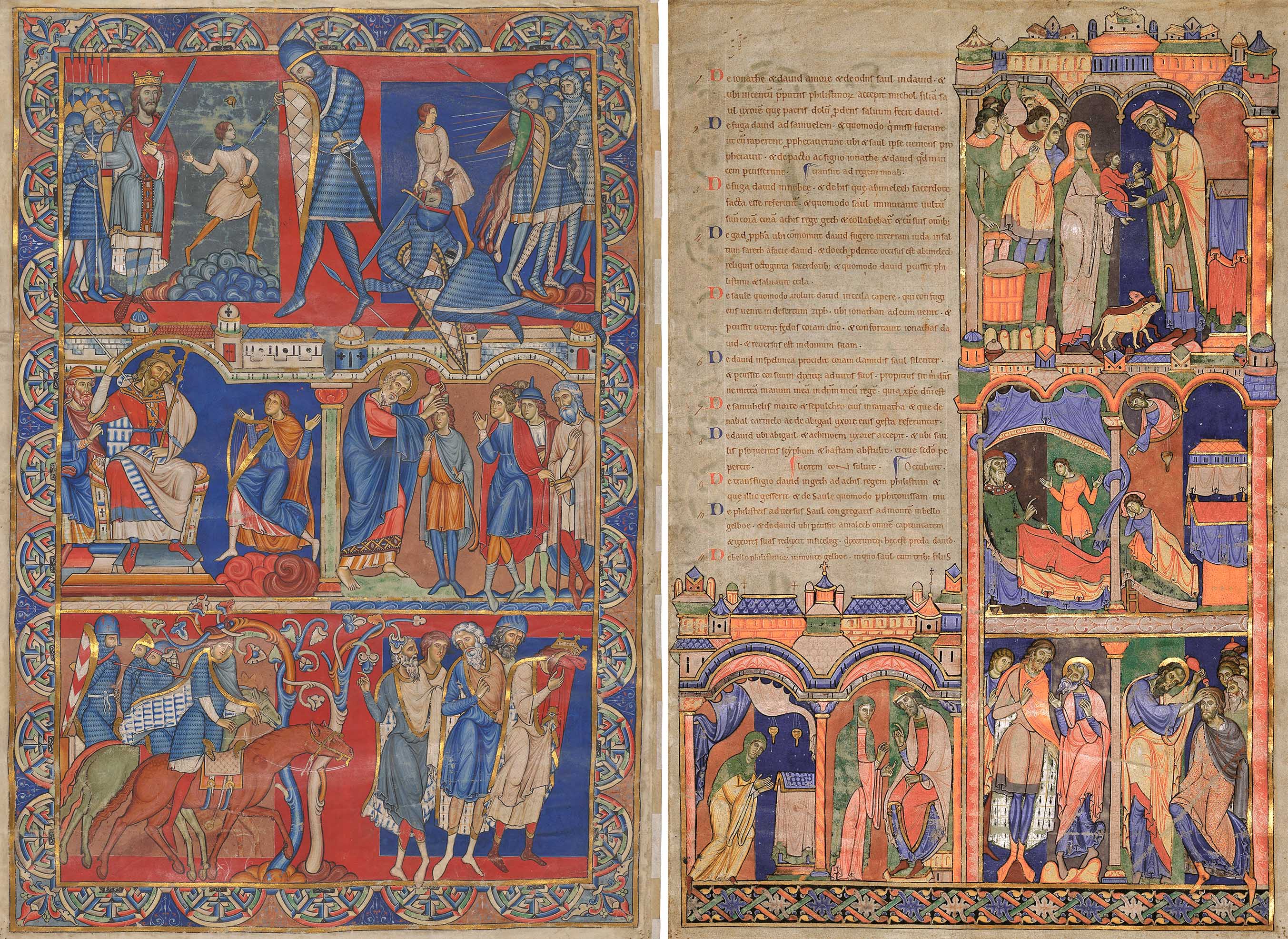
The Morgan Leaf of the Winchester Bible, 1150-80, Romanesque
-One of the first full Bibles, they wre not common in Medieval times.
-Super Expensive: Six people worked on this and it took them 4 years to complete.
An important person commissioned it.
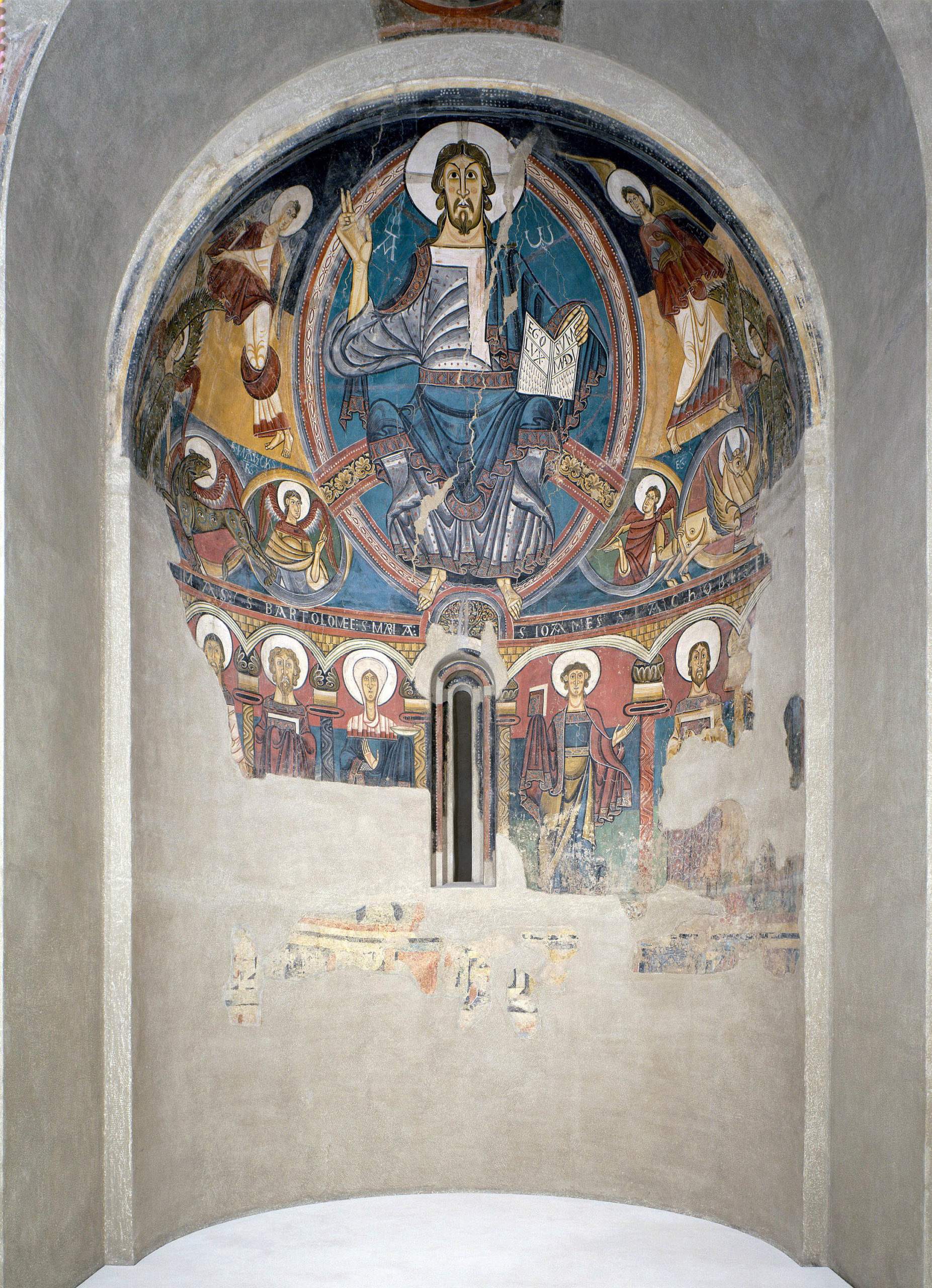
Apse Fresco of Christ in Majesty, Church of St. Clement outside the village of Taull, 1123, Romanesque
-Scene from the book of revelation
4 creatures surrounding Christ
Alpha and Omega Chracters represent Christ as the beginning and the end
Mandorla: Christ in almond shape
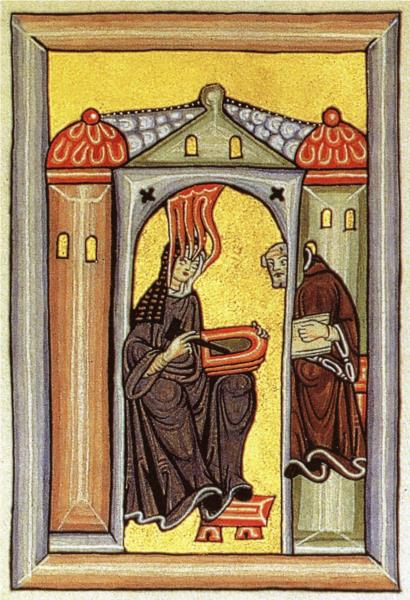
Hildegard Von Bingen and Volmer, Frontspiece of the Liber Scivias 1150-75, Romanesque
-Genius who believed she saw visions from God, had migraines/something that gave her the visions
-Original was lost in WW1, nuns made a very exact copy of it before it was lost.
-Divine vision represented by flames coming down from sky.
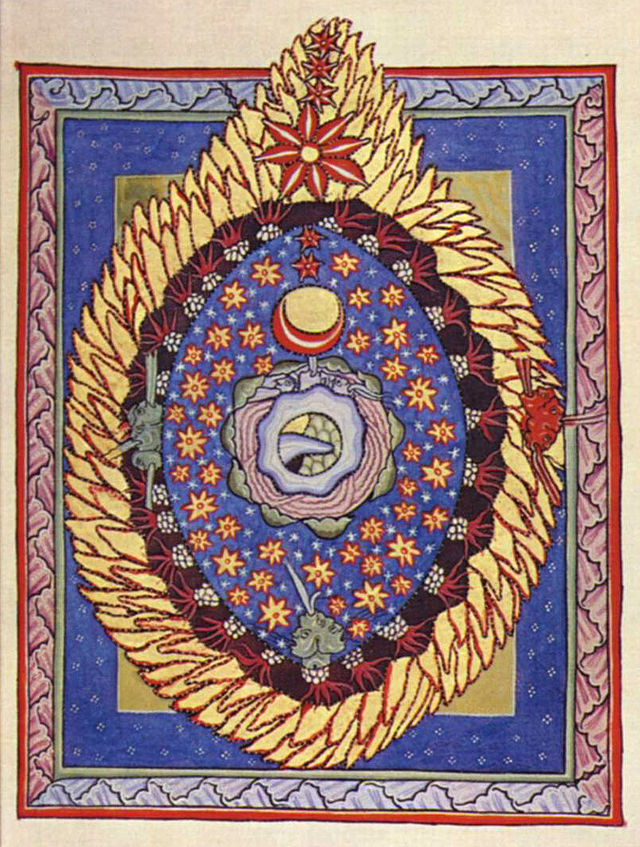
Vision of the Universe in the Liber Scivias, Hildegard von Bingen, Romanesque
-What she believed was/says was her vision of the universe → Many people say its simiar to what people may see during intense migrains.
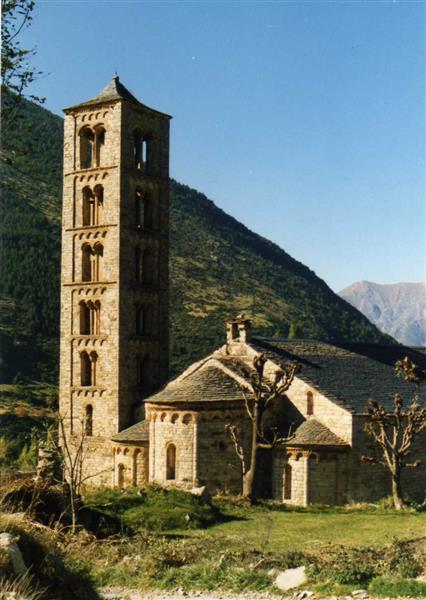
Church of St. Clement outside the village of Taull, 1123, Romanesque